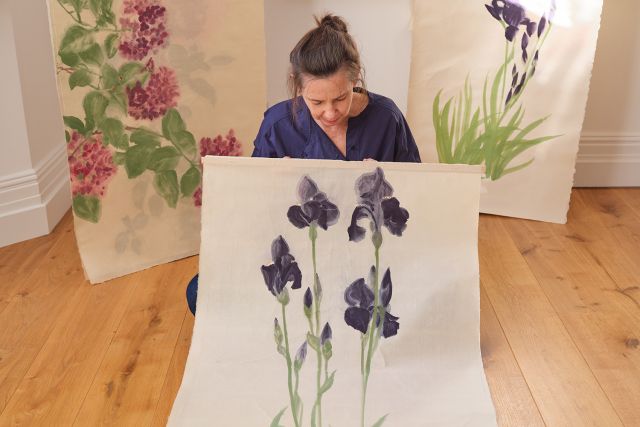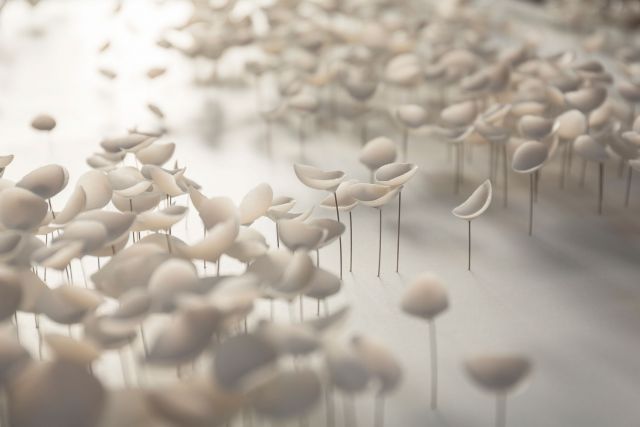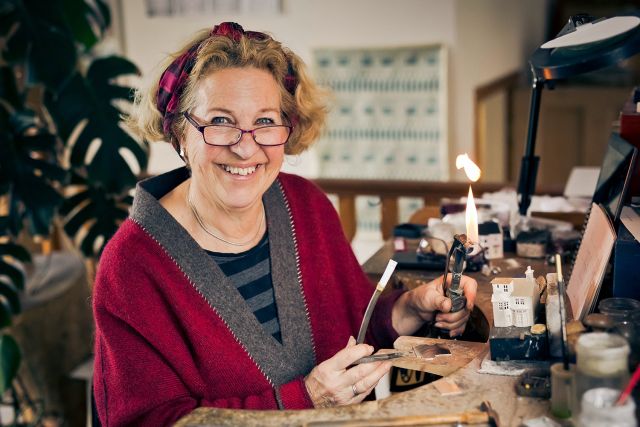Soluble cobalt gives this parian porcelain vessel a light blue hue. The vessel intends to challenge perceptions through semi-presence. The blue colour has moved from the interior to the edges of the ridges through saturation and evaporation in the porous object before firing.
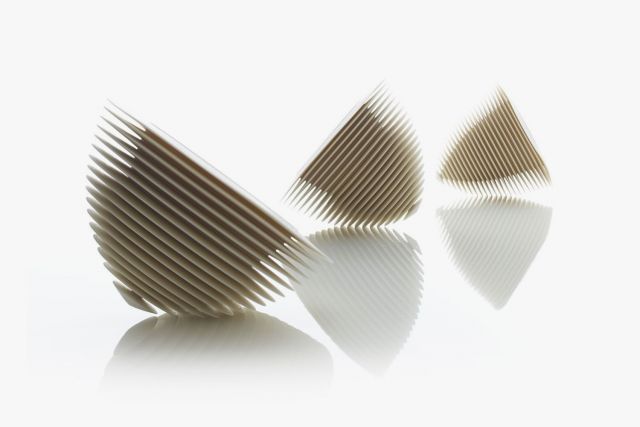
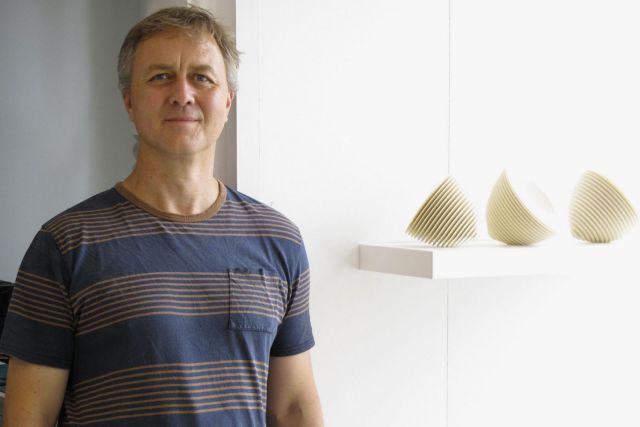
 Nicholas Lees Hand tool lathe.jpg.jpeg)
 Nicholas Lees wheel and porcelain.jpg.jpeg)
 Nicholas Lees_Leaning Vessel_detail_1738072.jpg.jpeg)
Nicholas Lees
- Ceramicist
- Selborne, United Kingdom
- Master Artisan
By appointment only
+44 7875704490
When taking risks pays off
- • Nicholas makes lathe-turned ceramic sculptures
- • He undertook a research degree at the Royal College of Art
- • He won the Cersaie Prize at the Premio Faenza in 2015
Nicholas Lees was 13 when he first encountered clay thanks to a ceramicist neighbour. However, it wasn’t until his final years of boarding school that he became passionate about making, after a new pottery teacher got him "really hooked”, to the point where he was spending every weekend in the pottery room. Nevertheless, he initially went to university to study English and History, two other great passions, before pursuing a second degree in ceramics. Many years later, he still has the same love of ceramics as he did at school, enjoying the “meditative” process of spending hours in his studio making hand-thrown, lathe-turned ceramic sculptures so precise they almost appear machine-made.
Read the full interviewWorks
Photo: © Jon Furley

Photo: © Sylvain Deleu
This group of white parian porcelain vessels explores changes in proportion and perception through the interrelation of the forms and shifting points of view.

Photo: © Sylvain Deleu
These two handmade ochre-yellow porcelain structures have been formed on a lathe, by removing material from previously thrown vessels. The juxtaposed discs that run down the two leaning vessels explore the ambiguous occupation and containment of space.
Height 32 cm
Diameter 11 cm
Height 22 cm
Diameter 16 cm






